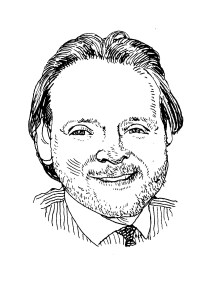
About a month ago, the city’s Department of Finance published the tentative assessment roll for fiscal year 2012 (July 2011-June 2012). Projected market values in the upcoming year increased by 3.75 percent to about $823.5 billion for New York City’s more than one million properties. This statistic confirms what property owners have known for a very long time: The city will increasingly look to the real estate industry for a growing percentage of its revenue, regardless of the fairness of its tax policy.
Last year, real estate taxes—and related real estate charges such as transfer taxes and mortgage recording taxes—represented approximately half of the total tax revenue collected by the city. As the city relies more heavily upon property owners to pay for constantly increasing government spending, the tax burdens on owners continue to escalate the time when market conditions blatantly indicate they should be doing the reverse.
In order to illustrate the unfairness of the present system, we need look no further than the fact that, on average, citywide property values on a per-square-foot basis have dropped about 38 percent from the market’s height to present levels. At the same time, assessed values (which are what real estate taxes are based upon) had increased by 26.4 percent, according to a report from the Real Estate Board of New York. This inequity is being felt by property owners across the board and is beginning to dissuade some investors from continuing to purchase New York City properties.
If you are a regular reader of Concrete Thoughts, you know that one of the things I always mention that has exerted upward pressure on value is an acute supply-demand imbalance. Demand for Gotham’s properties has been overwhelming, as both domestic and foreign purchasers have been scouring the city for opportunities. Unsurprising, the supply of available properties for sale is very low, as it historically is, leaving many of these potential buyers, extremely frustrated. It might, therefore, seem unimportant that some investors are getting turned off by ever-increasing real estate taxes, but what is important to realize is that a forest fire starts with a single spark.
There is an old saying that goes, “If something happens once, it is an isolated incident. If it happens twice, it is a coincidence. If it happens three times, it’s a trend.” Based upon this maxim, the trend has been that investors who have purchased New York City properties for years are, increasingly, looking at opportunities outside of the Big Apple as real estate taxes continue to spiral out of control. This leaves them feeling like they are working hard to drive revenue just to pay real estate taxes, water and sewer charges and other fees levied by the city.
FROM A PROPERTY owner’s perspective, the only thing that really matters about real estate taxes is the amount of their real estate tax bill each year. It is difficult for owners to fathom how their tax bills continue to increase year after year when property values have been dropping since 2007. In order to understand the real estate tax issue more clearly, we must look at how real estate taxes are calculated.
In what is a gross oversimplification, real estate taxes are determined by multiplying a property’s assessed value by the appropriate real estate tax rate. The assessed value is the property value ascribed to the property for tax purposes. The New York City Department of Finance determines a property’s assessed value by multiplying its estimated full market value by the assessment ratio for the property’s tax class.
In New York City, a property can have three different assessed values: an actual assessed value, a transitional assessed value and a billable assessed value. There are four different tax classes of properties in New York. Class 1 generally is for one- to three-family homes; Class 2 is for larger residential properties, including rental buildings, co-ops and condos; Class 3 is for public utilities; and Class 4 covers commercial properties. For the purposes of this discussion, we will not address Class 3 properties.
The assessment ratio for Class 1 properties is 6 percent of market value; Class 2 and Class 4 properties carry ratios of 45 percent of market value. Market value is determined by the Finance Department using different methods, which are usually manipulated toward whatever approach is beneficial to the city (more to come on this later). These methods include using comparable sales data for Class 1 properties and either a gross-rent-multiple approach or a capitalization-rate approach for Class 2 and Class 4 properties.
After assessed values are determined, they are multiplied by the appropriate tax rate (expressed in percentage terms) for each class of property. In the 2010-2011 tax year, the tax rate for Class 1 properties is 17.364 percent; for Class 2 it is 13.535 percent; and for Class 4 it is 10.312 percent.
The recent tentative assessment rolls for fiscal year 2012 have left property owners scratching their heads. For example, according to the city, Class 1 properties saw value rise by 0.86 percent based upon comparable sales, and assessed values rose by 2.65 percent. Market values for Class 2 properties rose by 13 percent and resulted in assessed values increasing by 8 percent. In Class 4, market values rose by 9.95 percent, pushing assessed values up by 7.25 percent.


